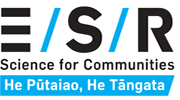So what is synthetic cannabis?
Synthetic cannabis is smokeable plant material that has been adulterated with one or more chemical compounds that are referred to as synthetic cannabinoids. The synthetic cannabinoids are added to the dried plant material so that it can be smoked in the same way as cannabis. The plant material itself has no psychoactive effect. The active ingredients in synthetic cannabis are not natural compounds but are manufactured in a laboratory.
What are synthetic cannabinoids?
Synthetic cannabinoids are manufactured chemical compounds. They are designed to react in the brain in a similar way to cannabis. There are around two hundred different synthetic cannabinoids that have been identified internationally, all with different chemical structures. All synthetic cannabinoids have a different chemical structure to THC, the major psychoactive component of the cannabis plant.Synthetic cannabinoids have not been clinically tested in the way a new medicinal drug would, and so their safety has not been established. Each of the different synthetic cannabinoids can cause different responses in the body. Some have been found to be more potent and some less potent than cannabis. For example one synthetic cannabinoid, AMB-FUBINACA, is reported to have an effect that is 75 times stronger than THC, the psychoactive compound found in cannabis.
What is the relationship between synthetic cannabis and cannabis plant material?
Cannabis is a naturally-occurring plant with psychoactive properties that have been known for hundreds of years. THC is known to act mainly on a particular part of the brain, called the CB1 receptor. When THC interacts with this receptor it causes a reaction which may include a change of mood, behaviour, perception and consciousness. Synthetic cannabinoids are designed to react with the same part of the brain in an attempt to create an effect like that of THC. Synthetic cannabis may contain one or more different synthetic cannabinoids which might have a similar effect to cannabis but might give completely different psychoactive highs, or side effects.
How is synthetic cannabis prepared?
Most synthetic cannabinoids in New Zealand are likely to have been produced in an overseas laboratory. They are imported in powder form and dissolved in a solvent which is then sprayed onto finely chopped plant material. The plant material is left to dry before packaging. The resulting product is synthetic cannabis. There is no quality control in the process. There is likely to be variability in the amount of synthetic cannabinoid present across different batches, and even in a single dose.
What are the risks?
The user does not know which of the many synthetic cannabinoids is present on the plant material they purchase and the same packaging does not mean the same cannabinoid is present. A packet may also include more than one synthetic cannabinoid.
Many of the synthetic cannabinoids are likely to be harmful with unpredictable effects. Synthetic cannabinoids have not been tested in the way medicinal drugs are tested and they have not been proven to be safe.
People also react to drugs in different ways. For some, the effects may be more severe than for others. The effect of a drug can also be affected by other drugs or alcohol taken by the person, their mental health, or the presence of underlying medical conditions.

Photograph 1. Plant material containing the synthetic cannabinoid AMBFUBINACA, with microscopic image showing visible crystals.

Photograph 2. A sample of plant material as seen by the naked eye.
Why are Synthetic Cannabinoids having such a dramatic impact?
Find out more from our factsheet. [PDF, 834 KB]
‘Unknown Substance use in Emergency Departments’ (USED) programme
The ‘Unknown Substance use in Emergency Departments’ (USED) programme is a unique pilot that ESR runs in conjunction with District Health Boards. The research project involves testing patients who show specific symptoms of intoxication at the Emergency Department to identify any substances, such as synthetic cannabinoids, that may be present. The focus is on identifying new synthetic recreational drugs as they emerge on the drug scene, to allow for faster response by health, police and community agencies.
The USED programme is part of ESR’s wider 'Border to Grave' drug surveillance activities, which has been established to identify new synthetic drugs as they enter New Zealand and track their real-time use in the community. The drug intelligence insights gained from ‘Border to Grave’ will be important in informing Health, Police and Justice sector responses to these new drugs, and will be an important part of the development of a drug early warning system.
Find out more about USED: ESR USED press release or the Psychoactive Substances Regulatory Authority website(external link).
